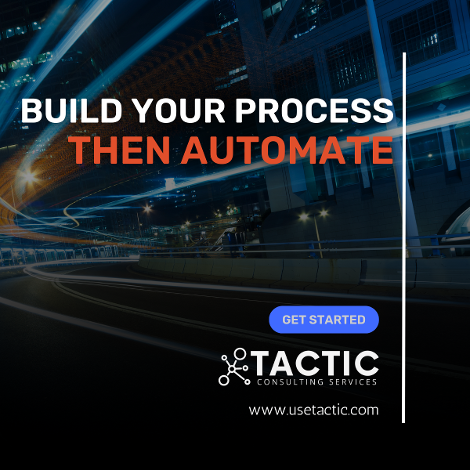Share this
HubSpot Implementation Process Step 4: Define Process & Plan Automation
by James Weis on Jul 13, 2023 1:03:52 PM
 Step 4 in the HubSpot Implementation Process can feel like where the rubber meets the road. After setting your strategic goals, engaging key stakeholders, and handpicking the HubSpot tools that align perfectly with your unique needs, it's now time to focus on shaping key business processes and strategizing for automation. The goal here is to ensure that your chosen tools will not just effectively cater to your organization's distinct demands but also seamlessly blend into your day-to-day operations. This step can be seen as the architecture phase of your implementation journey, where you design the structural blueprint that will guide how your organization utilizes the power of HubSpot.
Step 4 in the HubSpot Implementation Process can feel like where the rubber meets the road. After setting your strategic goals, engaging key stakeholders, and handpicking the HubSpot tools that align perfectly with your unique needs, it's now time to focus on shaping key business processes and strategizing for automation. The goal here is to ensure that your chosen tools will not just effectively cater to your organization's distinct demands but also seamlessly blend into your day-to-day operations. This step can be seen as the architecture phase of your implementation journey, where you design the structural blueprint that will guide how your organization utilizes the power of HubSpot.
Business processes form the backbone of any successful organization. They provide a roadmap for achieving your strategic goals and set the rhythm for your daily operations. When these processes are well-defined and mapped out in alignment with the tools at your disposal, it paves the way for improved productivity and operational efficiency. This is especially true when we're talking about an all-in-one platform like HubSpot, with its vast capabilities for automation.
Our focus is twofold: to ensure the chosen tools align with your unique organizational requirements and to guarantee their smooth assimilation into your everyday processes. Let's delve into the four main categories of this process-defining phase: Identifying Core Processes, Process Standardization, Mapping the Processes to HubSpot, and Automation Planning.
- Identifying Core Processes: The initial step in defining your processes is to identify the core procedures that drive your business operations. These are the activities that your teams perform daily to keep the business running smoothly. They could include everything from managing customer relationships and responding to inquiries, to conducting sales calls and executing marketing campaigns. It's crucial to take a comprehensive inventory of these processes, noting the key tasks, responsibilities, and expected outcomes. This step provides a solid understanding of the fundamental operations of your business and forms the foundation for the rest of the process-defining phase.
- Process Standardization: Once you've identified your core processes, the next stage is to standardize them. This involves creating a uniform approach to carrying out each process, reducing variability, and increasing efficiency. This step ensures that everyone on your team is on the same page and follows the same procedures, which can significantly improve productivity and prevent miscommunication. Additionally, standardized processes are easier to measure, track, and improve, offering a clear roadmap for operational excellence.
- Mapping the Processes to HubSpot: With your standardized processes in hand, the next task is to map these processes to your HubSpot tools. This means aligning each process with the relevant HubSpot functionalities and adjusting as needed to ensure a perfect fit. This stage may involve configuring your HubSpot portal to mirror your processes, creating custom fields, or setting up specific workflows. The goal here is to adapt the tool to your operations, not the other way around. This ensures a seamless transition and maximizes the value you gain from your HubSpot implementation.
- Automation Planning: The final stage in the process-defining phase is planning for automation. Automation can significantly boost efficiency by taking care of routine tasks, freeing up your team to focus on higher-value activities. With your processes mapped to HubSpot, you can identify opportunities for automation. This could involve setting up automated emails, creating lead nurturing sequences, or using bots for customer service inquiries. It's important to plan this carefully, ensuring that automation enhances your processes and provides tangible benefits to your team and customers. Automation should be a tool to empower your team, not a replacement for the human touch where it's most needed.
Defining these processes and planning for automation isn't just a step on your HubSpot implementation journey; it's a major leap toward unlocking HubSpot's full potential. When utilized properly, automation can be a game-changer, liberating your team to concentrate on what they excel at—innovation, strategy, and growth—while the system efficiently handles routine tasks.
As we continue our journey in the next article, we will dive into one of the most crucial aspects of any HubSpot implementation: training your team. Ensuring that your team is well-equipped and confident in using HubSpot can determine the success of your implementation. We'll share key insights and tips to ensure a smooth transition, cultivate user proficiency, and facilitate the acceptance of HubSpot within your organization. Stay tuned because successful implementation is not just about adopting a tool—it's about transforming your business operations.
